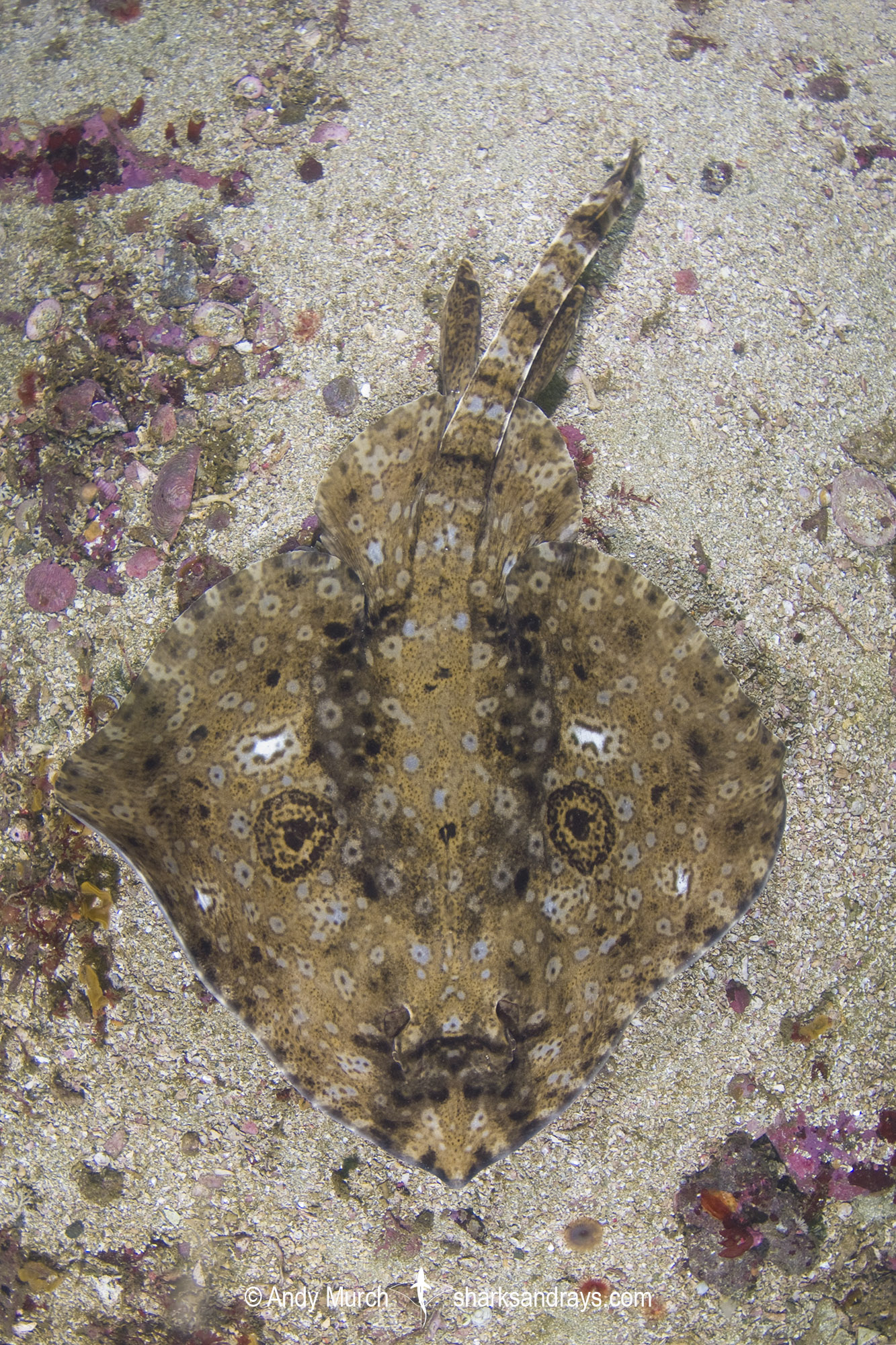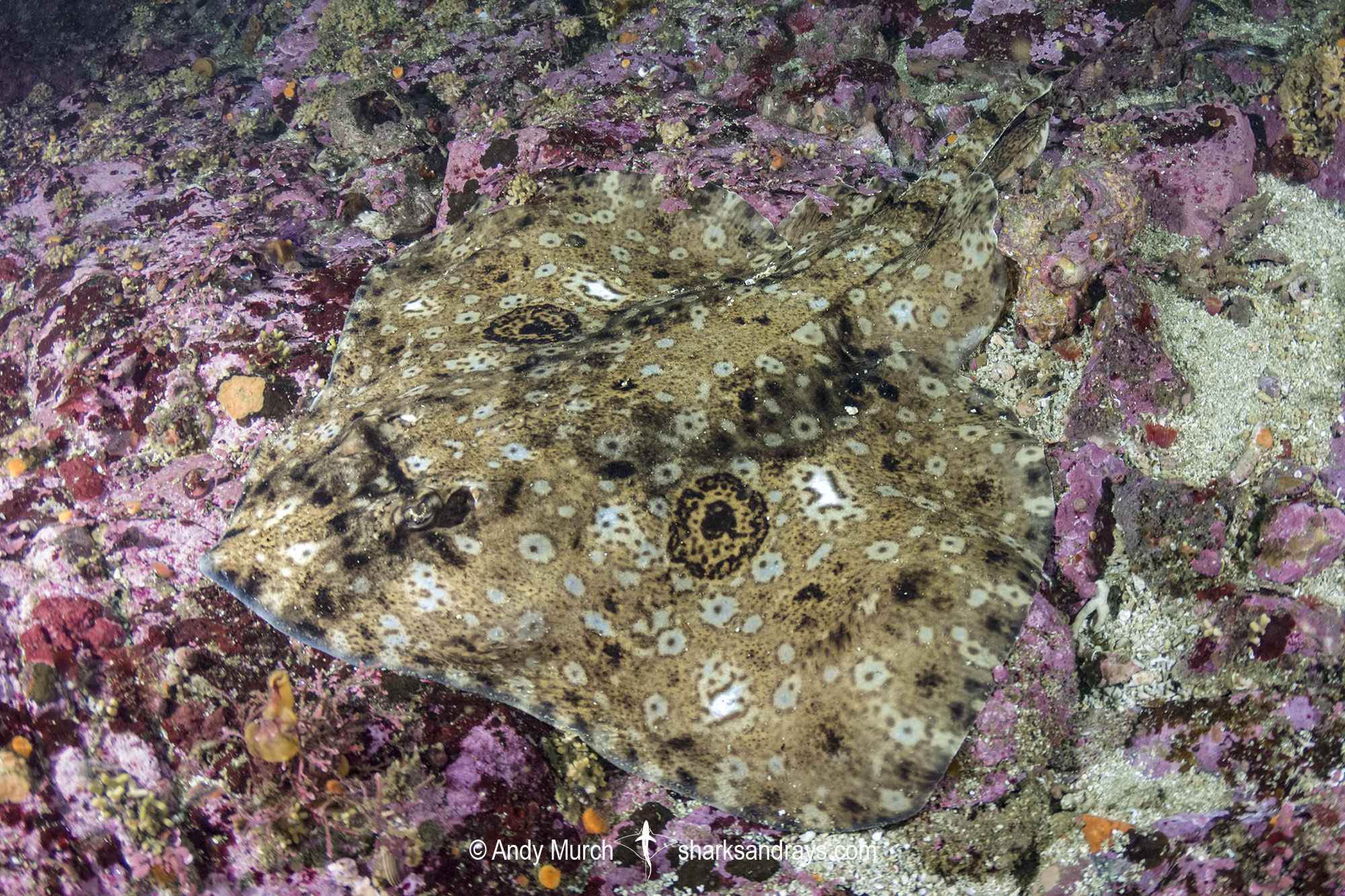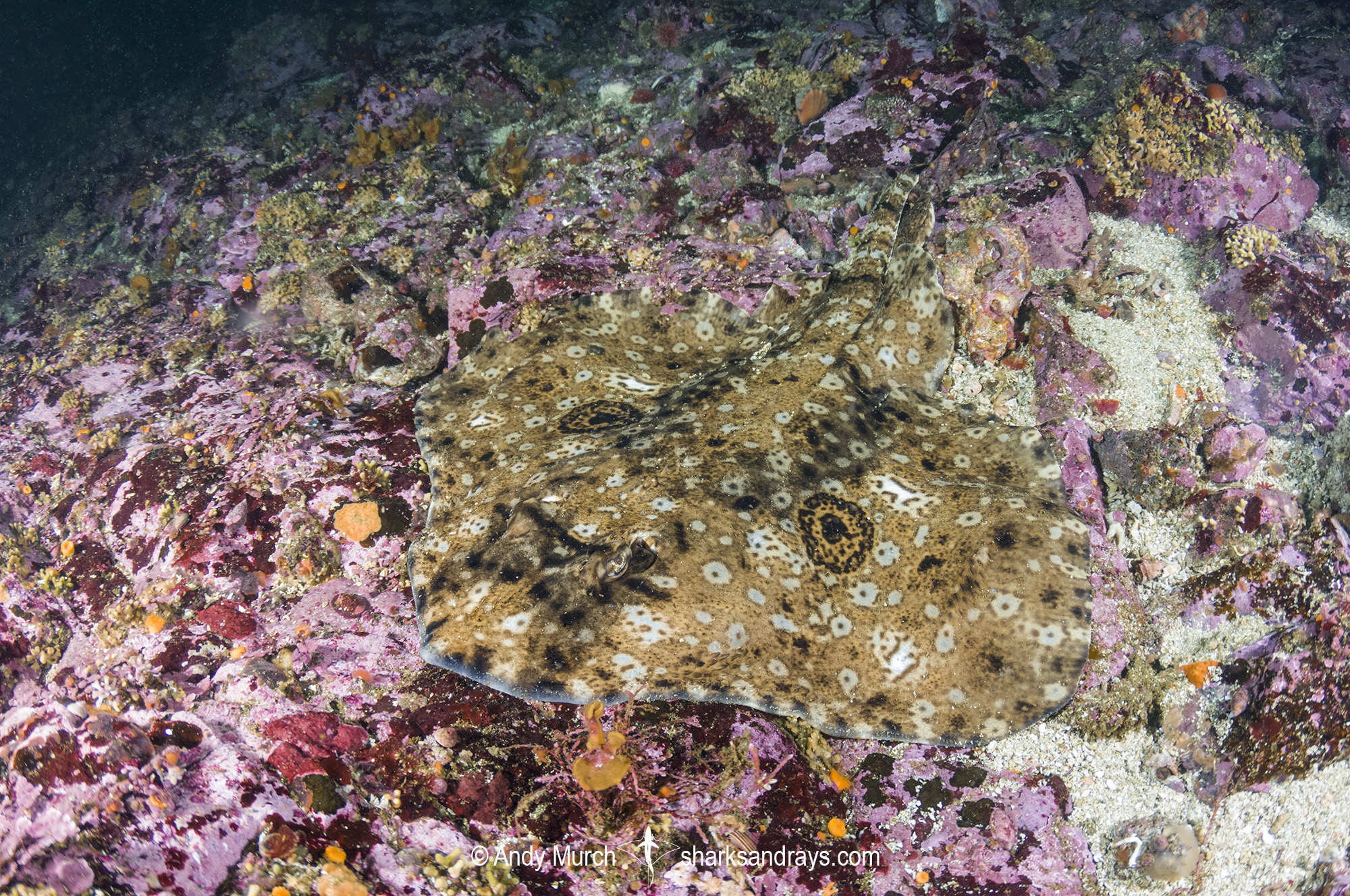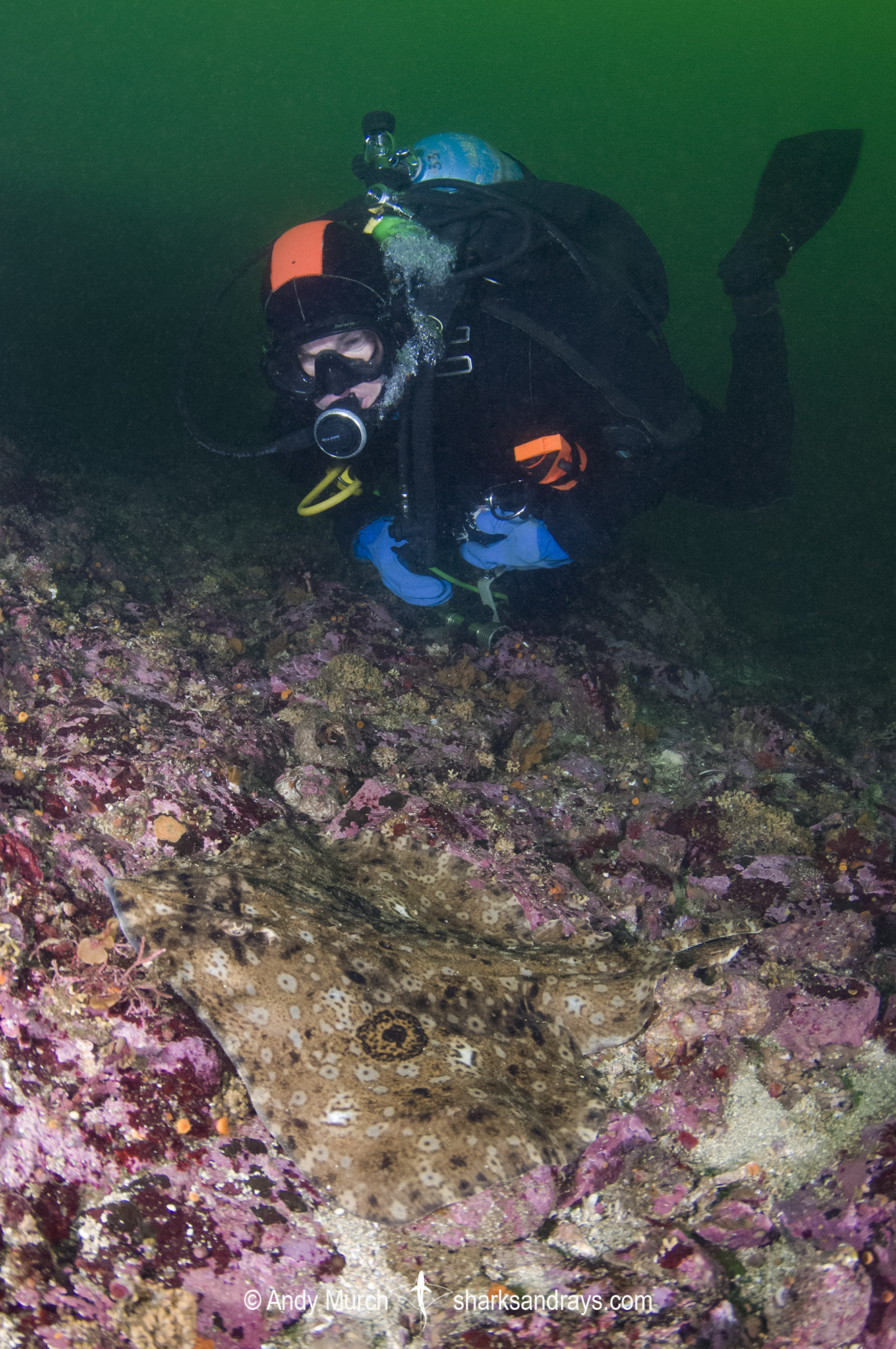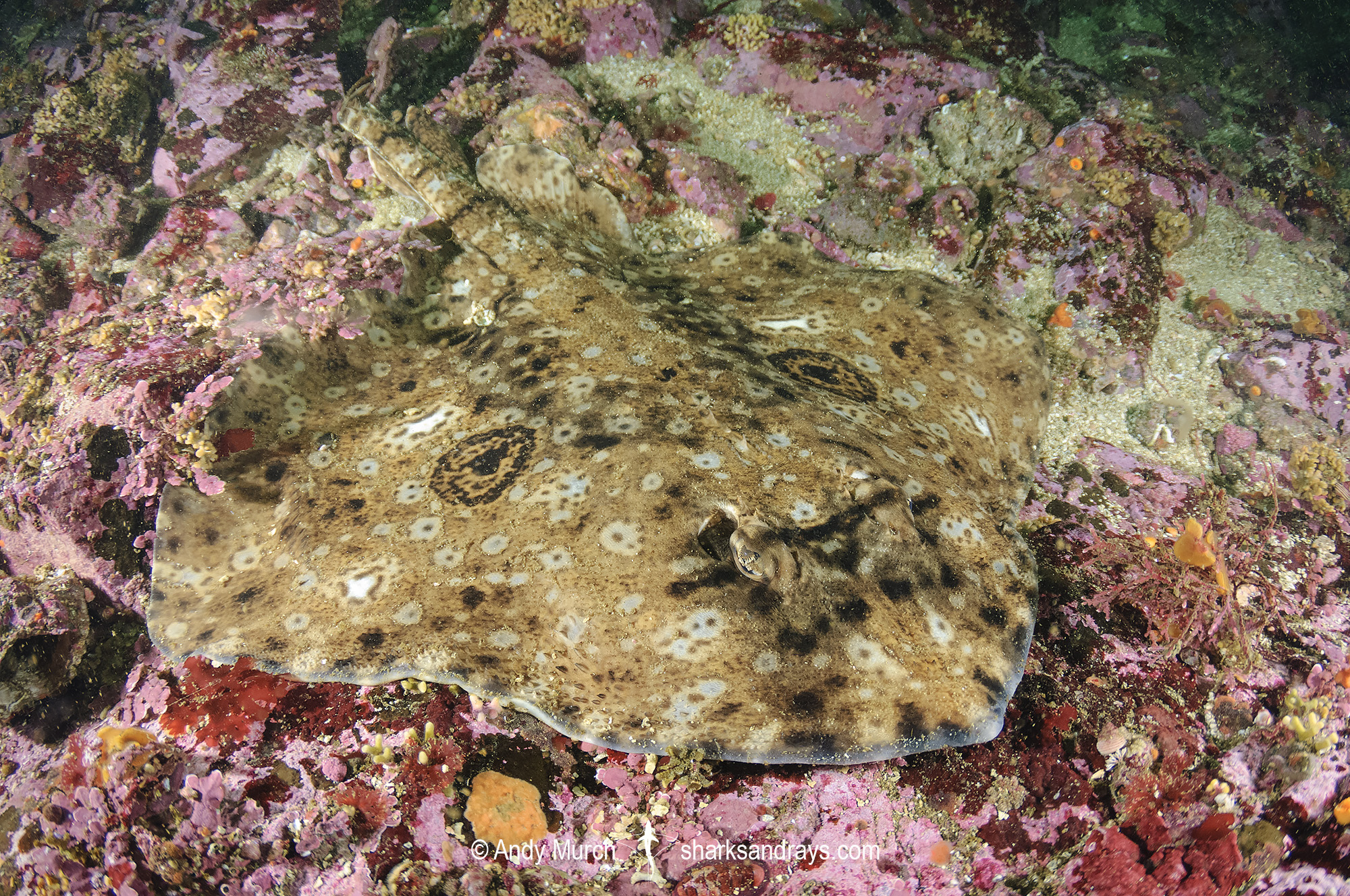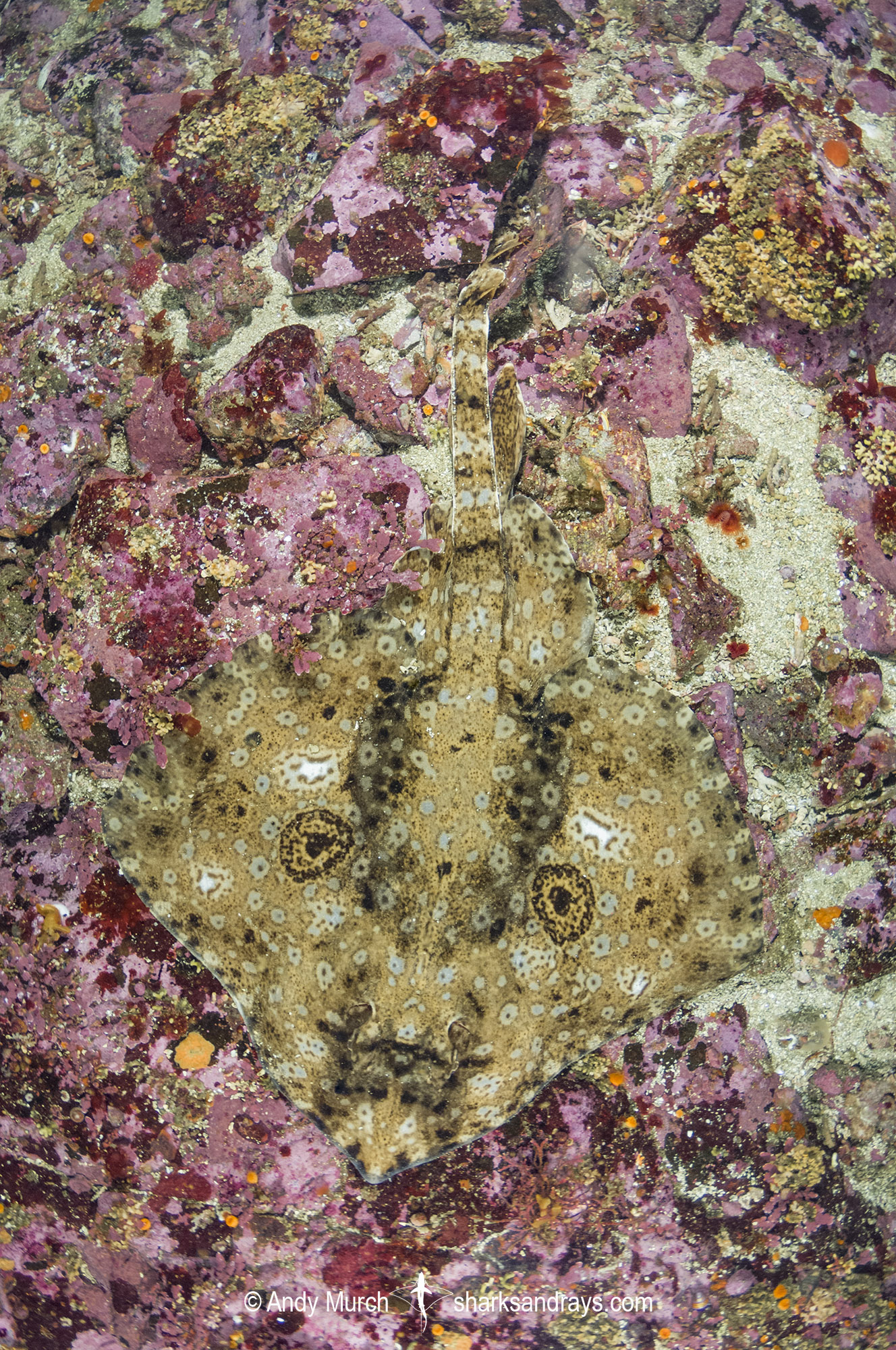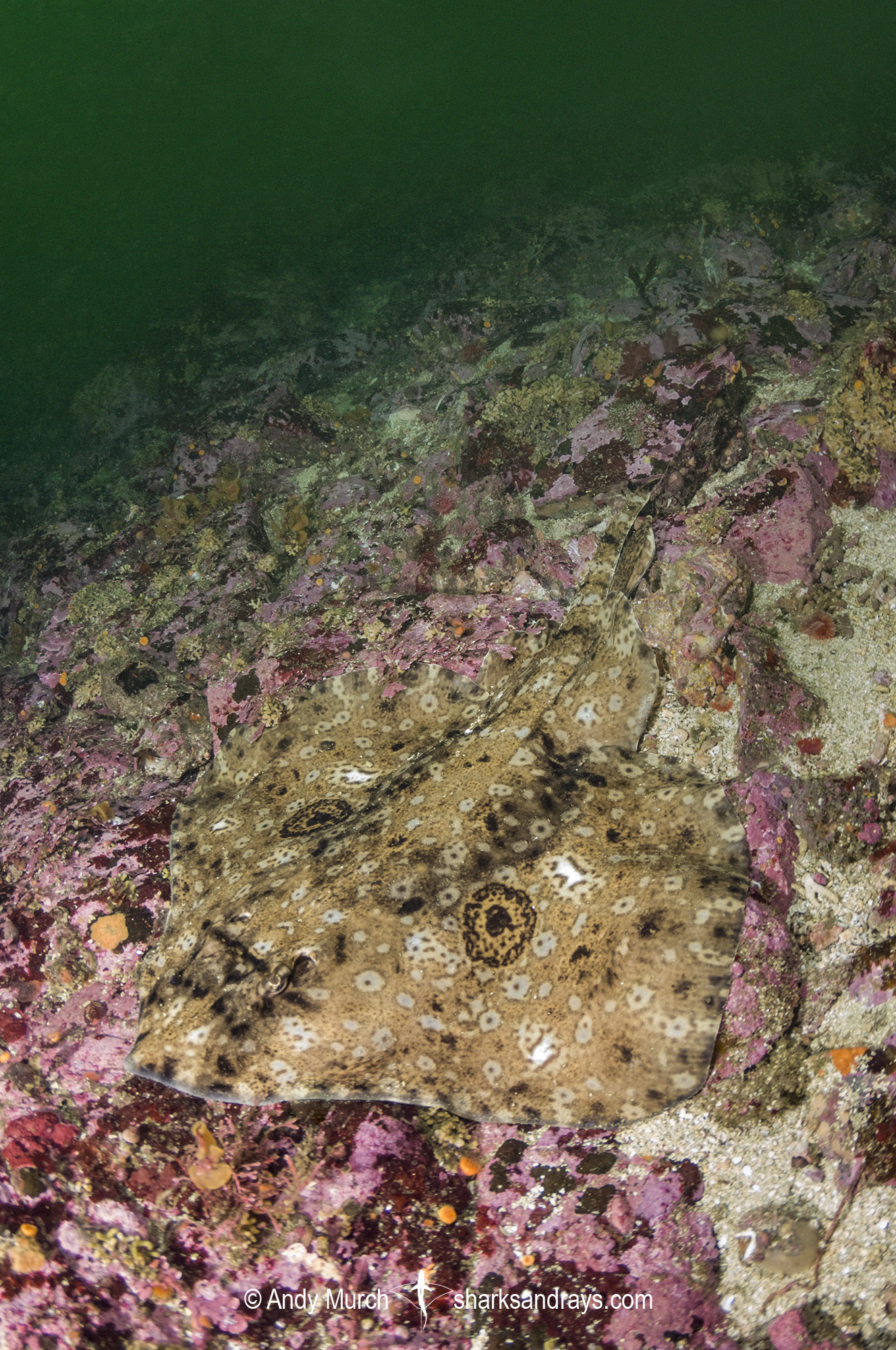Common names
Pacific Starry Skate, Starry Skate.
Binomial name
Caliraja stellulata.
Synonyms
Beringraja stellulata, Raja stellulata.
Identification
A medium-sized skate with a wide heart-shaped or rounded kite-shaped disc. Disc width 1.2-1.3 x disc length. Snout relatively short and bluntly rounded with a small protruding lobe at tip. Snout length 2.6-2.8 x orbit length. Eyes large. Anterior margins of pectoral fins undulate. Pectoral apices narrowly or broadly rounded. Disc covered in star-shaped denticles. Orbital and nape thorns quite large. Midline thorns discontinuous on disc but prominent on tail to first dorsal fin. Snout area of ventrum rough in adults. Pelvic fins large. Anterior pelvic lobe much shorter than posterior lobe. Tail highly depressed, slightly shorter than disc length, with narrow lateral folds. Dorsal fins broadly rounded and well separated. Thorns present between dorsal fins. Caudal fin short.
Colour
Dorsum light/mid brown with numerous dark and light spots and blotches forming a complex pattern mirrored along midline. Numerous dark spots on snout and across eyes. Two poorly defined ocelli present on each pectoral fin. Anterior ocellus consisting of an irregular black blotch within a broken black outer ring. Posterior ocellus consisting of an irregular white blotch with a brown-spotted margin. Disc margin ringed by light and dark spots. Tail with thin light and dark saddles or rings. Ventrum pale with darker spots and blotches.
Size
Maximum length 76cm. Length at hatching 12-16cm.
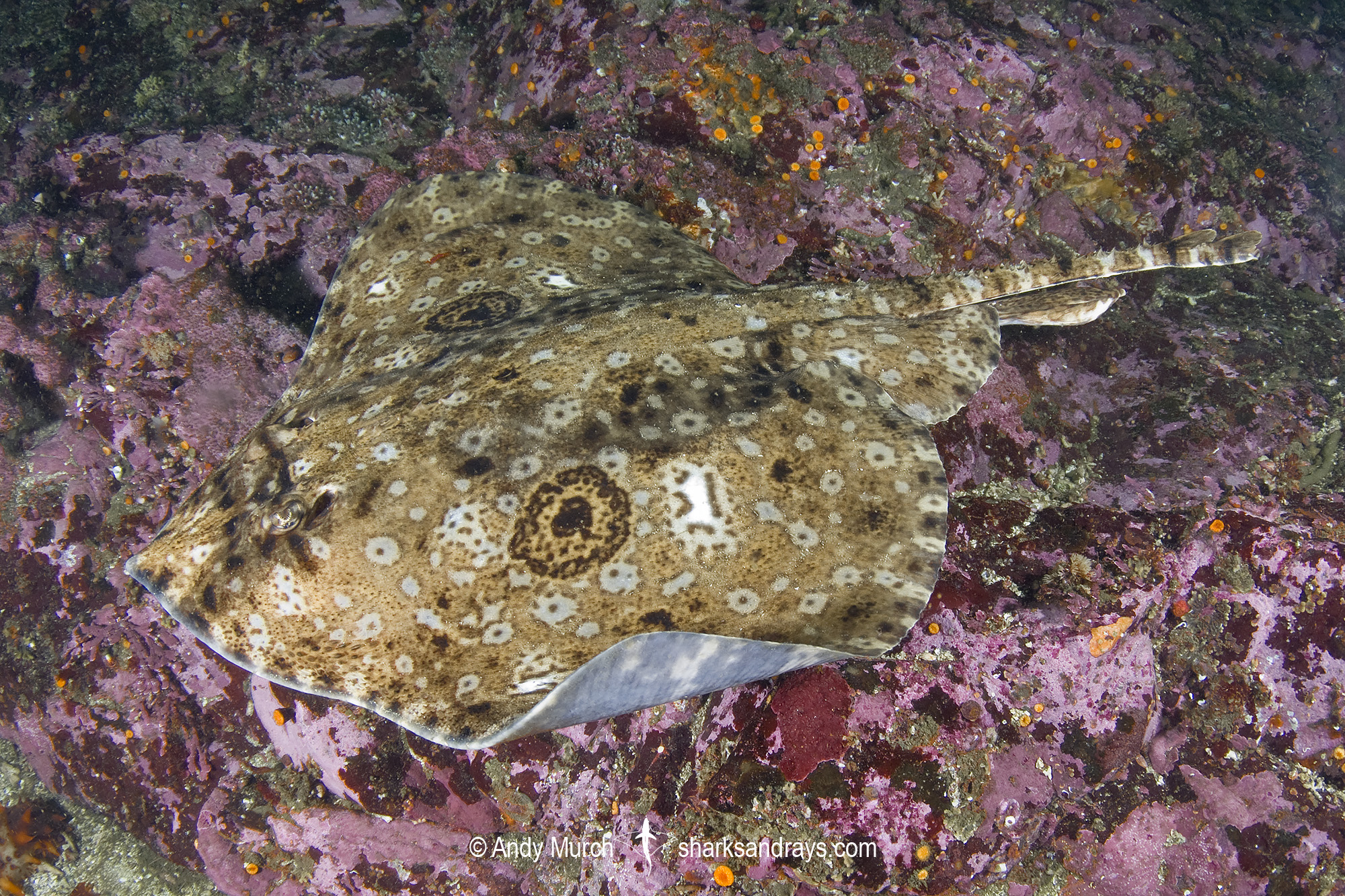
Conservation Status
LEAST CONCERN
The Pacific Starry Skate is likely taken occasionally as bycatch in trawling and recreational fisheries, although little species-specific data are available. As this species is most commonly found on rocky substrate it probably does not make up a significant portion of skate bycatch from trawling (Ebert 2003, James 2011). This species is not commonly collected in NOAA Fisheries trawl surveys, but is commonly collected on NOAA Fisheries survey longlines that are over rocky and hard substrates (D. Ebert, unpub. data).
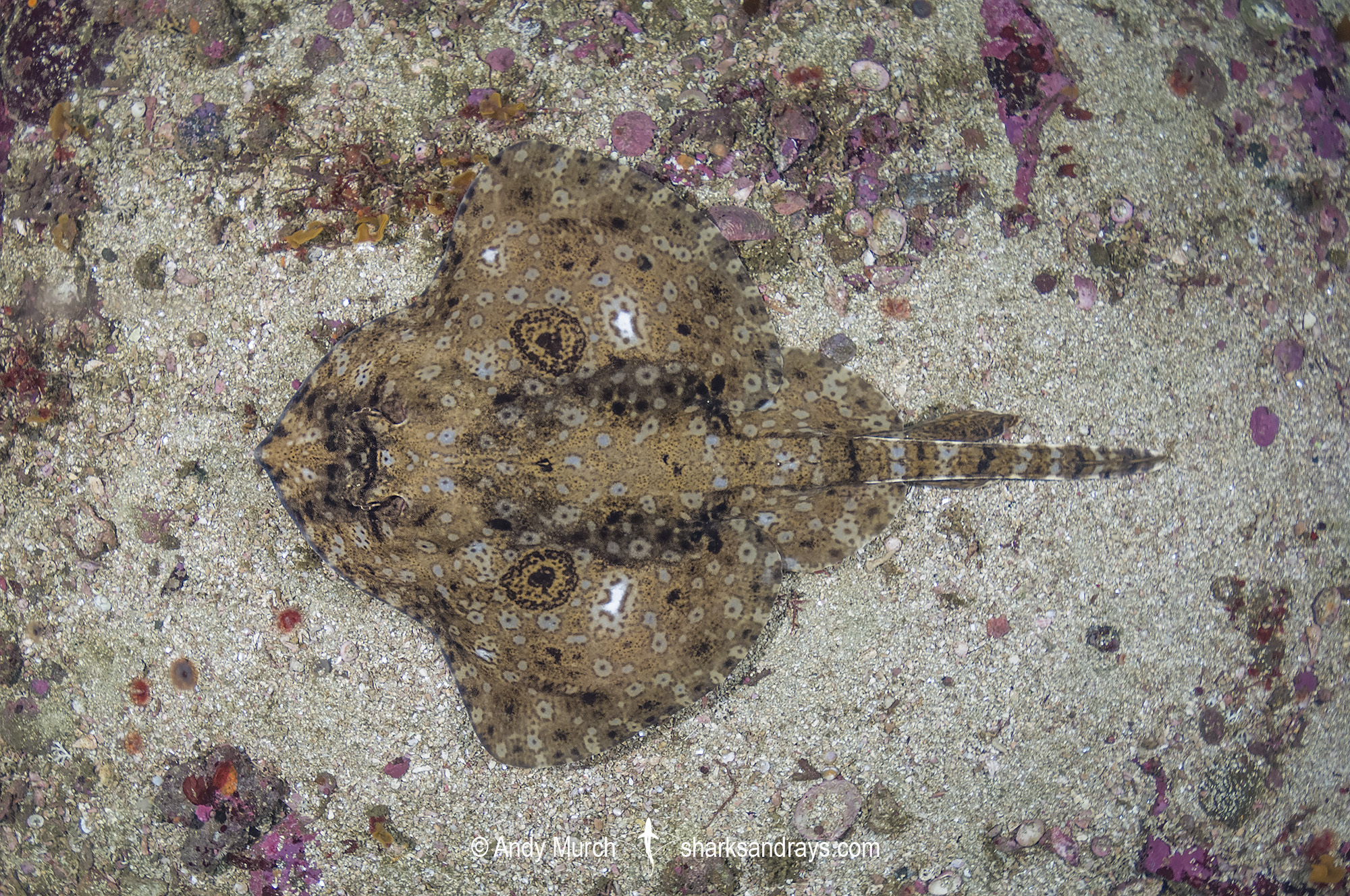
Habitat
Temperate seas. Demersal on rocky reefs or sand/mud in proximity to reefs/rocky outcrops with vertical relief. From 18-982m, but mostly between 70-150m. Preferred temperature range 4.1–11.6°C.
Distribution
Northeast Pacific. Found from Coronado Bank in northern Baja California, Mexico to Barkley Sound, British Columbia, Canada. The Pacific starry skate is abundant in Monterey Canyon. Records from the Gulf of Alaska and Bering Sea may refer to more northerly species such as the Alaskan skate.
Reproduction
Oviparous. Egg cases are 7.1-7.8cm long and 5.5-7.0cm wide.
Diet
Small bony fishes, cephalopods, and shrimps.
Behavior
The Pacific starry skate relies on its elaborate markings to camouflage itself against rocky reefs.
Reaction to divers
Very docile. Remains motionless relying on camouflage unless molested. Tolerant of divers wafting sand away from its back if done slowly.
Diving logistics
Although the Pacific starry skate is a common inhabitant of deep reefs in California, it is very rarely encountered.
I have only encountered one starry skate while diving. This very lucky find occurred in August in ~15m depth within Barkley Sound on the west coast of Vancouver Island, Canada.
What’s new
View our full list of updates
Similar species
No other northeast Pacific species have the unique pattern and shape of the Pacific starry skate.

